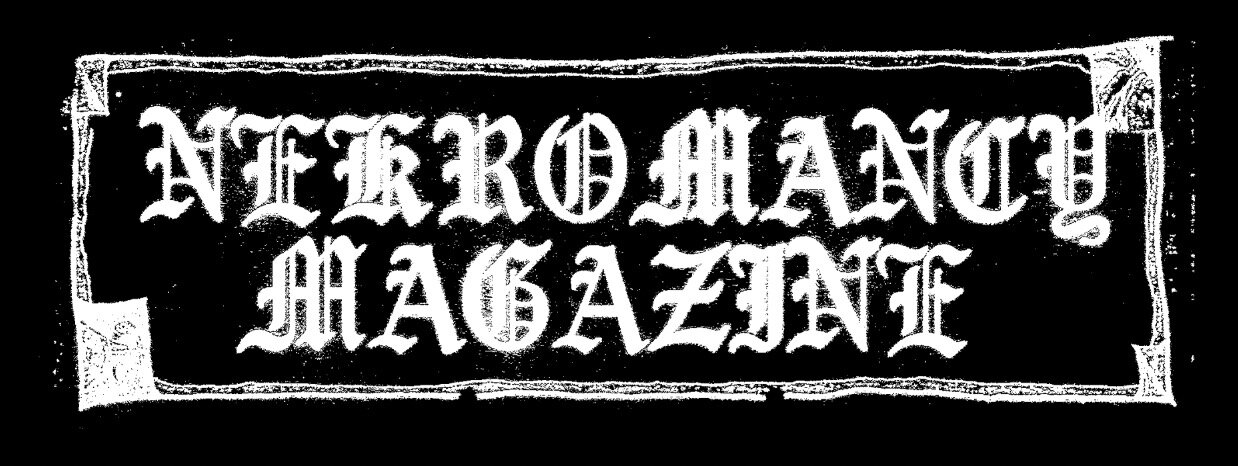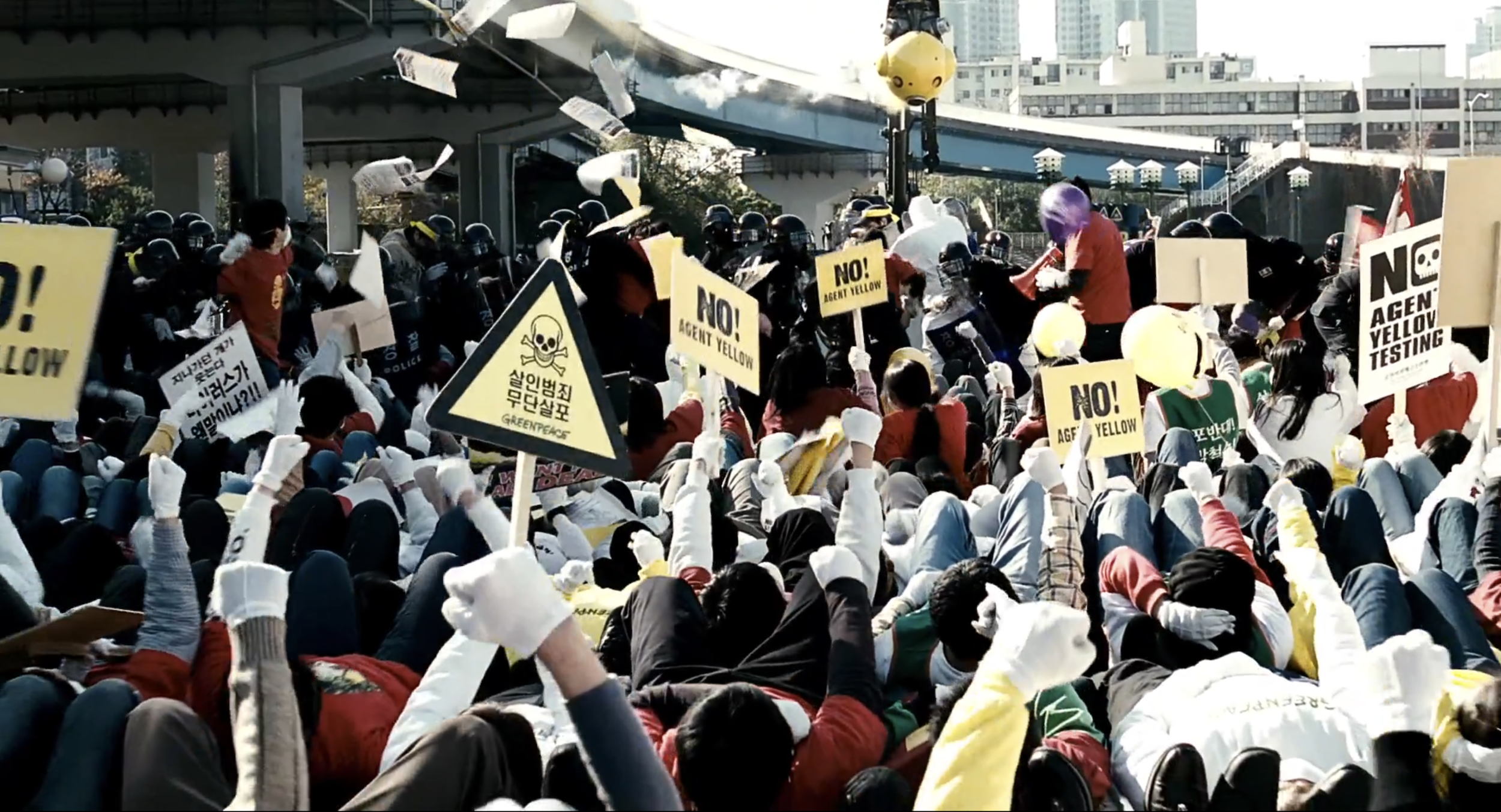The Host: Diving into Eco-Horror on the Han River
June 21, 2021 ● Amber T
Chungeorahm Film Sego Entertainment
Snaking like a spine through the centre of South Korea’s capital, Seoul, is the Han River, a monumentally important geographical feature that has provided both an economic and cultural backbone for the country since its earliest kingdoms.
In the present day, along the banks of the Han between Mapo and Wonhyo bridges, sits a giant sculpture of a gwoemul – a monster. The 10m tall dedication to Korea’s flourishing film industry was paid for by the Seoul Government, although opinions on it are staunchly divided. Beneath its hulking flank, couples take shade for their picnics, and children clamber on the flowering segments of its gaping mandibles.
A short bus ride away from the sculpture sits Yongsan Garrison, one of 15 US military bases in South Korea. Yongsan (or ‘Dragon Hill’) Base enjoys a number of successes; it was once voted one of the top 3 US military bases in the world, as well as having a school that regularly ranks highly for educational prowess. It also boasts a level of toxic benzene in its groundwater that is almost 700 times higher than safe for humans.
In 2004, the Seoul government launched a multi-million Korean won clean-up of the waste. Two years later, Bong Joon-ho released The Host (2006).
Bong Joon-ho is a director who has never shied away from depicting his views on environmental politics. From Snowpiercer (2013), his bleak tale of a humanity that has failed to stave off climate change, to the heart-breaking Okja (2017) and its unflinching portrayal of the meat industry. But before these, and before the director was known internationally for Parasite (2019), his Oscar-winning call to eat the rich, Bong cut his teeth on green issues by depicting a monster scarier than wage gaps and late-stage capitalism (but only just).
The Host - known as Gwoemul in its native Korean - is a monster movie for the age of eco-consciousness featuring all the hallmarks of South Korean horrors; including biting wit and humour blacker than a bowl of jjajangmyeon noodles. The film follows the hapless and slow Gang-Doo (Kang-ho Song), a man whose existence is punctuated by exasperated sighs from his long-suffering family. With a father who pities him and siblings who scorn him Gang-Doo is far from the pumped-up protagonist template seen in countless Western horrors. In the summer of 2006, Gang-Doo’s simple life working at a snack stand along the Han is thrown into chaos when a mutated leviathan breaches the surface and gulps down his young daughter, Hyun-seo (Ko Asung). With his family in tow and the US military on his tail, he leads a mission to rescue her from the belly of the beast.
Chungeorahm Film Sego Entertainment
From the get-go, Bong makes no bones about who is to blame for the existence of this amphibious abomination. The Host’s opening scene shows a US military pathologist ordering his Korean assistant to pour bottle upon bottle of expired formaldehyde down the drain. Mr Kim (Hak-seon Kim) does as he is ordered, but not without expressing his concern for the fact the toxic chemical will lead directly into the Han river. The American insists, showing zero regard for the Korean’s hesitations – and why should he? He’s not Korean, after all. It’s not his river.
While The Host’s creature may be fantastical, this opening is not. In 2000, Lt. Gen. Daniel J. Petrosky publicly apologised to the people of Seoul after releasing 20 gallons of the cancer-causing formaldehyde into the Han. This added to a growing itinerary of chemical misadventures and contributed to growing unease among the Korean public, many of whom had become uncomfortable with US military presence in the capital.
And it wasn’t just Korea either. For decades it has been alleged that US military bases have played a role in toxic contamination of parts of the Pacific. Korea’s close neighbour Japan has been embroiled in its own battle against the biological and chemical experimentation by US operations on the island of Okinawa. Both American and Japanese veterans stationed on Okinawa in the 60s and 70s have made extensive claims that Agent Orange was present and used there. Towards the end of The Host, in an attempt to destroy the monster, the US military dump a cloud of chemicals known as ‘Agent Yellow’ onto a crowd of Greenpeace protestors. It doesn’t work, and the sardonic comment from Bong isn’t exactly subtle.
Chungeorahm Film Sego Entertainment
It’s certainly not the only instance in which Bong toys with his audience like the monster toys with its prey. In the build to the film’s climax, Hyun-seo, trapped in the sewer by the beast, befriends and protects another kidnapped child, Se-joo (Dong-ho Lee). Se-joo is homeless, already suffering due to the actions of adults meant to take care of him. Only a few years older than him, Hyun-seo makes the boy her responsibility, despite being a child herself. Tragically, Hyun-seo does not survive her entrapment, bravely attempting to free herself and Se-joo, but ultimately falling victim to the monster’s voracious appetite. Her future is stolen from her due to the carelessness and greed of adults who never gave her a second thought. In the words of Greta Thunberg, ‘How dare you! You have stolen my dreams and my childhood with your empty words.’
Hyun-seo’s fate is also an interesting subversion of the ‘princess and the dragon’ narrative that has permeated Western storytelling since the myth of Perseus and Andromeda. In true Korean cinema fashion, Western expectations are blown out of the water when the innocent does not survive her ordeal. It’s a heartbreaking but honest look at the future we are leaving for our most vulnerable.
Chungeorahm Film Sego Entertainment
By the end of the film, Gang-Doo has lost his daughter, his father, and lives his life in a state of PTSD - always watching and waiting for another behemoth to drag itself out of the water. The summer mats of picnickers on the Han are long gone, leaving only thick snow as Seoul’s bitter winter sets in. And the news on the television hints at an oncoming global conversation centring on Korea’s recent attack. The newscast mentions ‘virus’ and ‘misinformation’ - buzzwords that are eerily relevant to our world today. To some in 2021, the future seems bleak, and every attempt we make to reverse the damage done to our own terrestrial host seems powerless and miniscule. Nearly two decades later, The Host is still as relevant - if not even more - to the conversation about ecological emergency.
But, tucked away in their snack shack, Se-joo asks his newly adopted father figure to stop dwelling on the news and to ‘concentrate on eating’ - bringing him back to humanity, reminding him that love and joy is still here. As with most of Bong’s filmography, there is a quiet hope at the end, one so fragile that you dare not look at it straight on. It is a hope that exists in chaos, a burning ember among the ashes.
Amber T ● Writer
Twitter: @hornbloodfire
Instagram: @hornbloodfire
Over-opinionated horror enthusiast. Loves Asian horror so much she moved there to ghost hunt.




